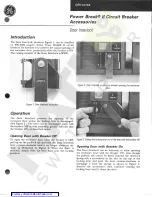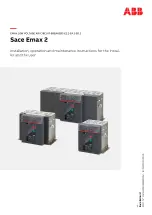
TOS9213S/ TOS9213AS
5-13
Using the
keys, move the cursor to the right of the current detection
response (RESPONSE), and make settings using the rotary knob.
Turn the rotary knob clockwise
: SLOW
→
MID
→
FAST
Turn the rotary knob counterclockwise : FAST
→
MID
→
SLOW
■
SLOW
In the SLOW mode, a current is detected at an integrated time constant of approxi-
mately 40 ms in response to the mean value. This is equivalent to the current-detec-
tion response of Kikusui’s general-purpose withstanding voltage tester. This setting
complies with the dielectric breakdown detection defined in the safety standards,
and can be used to conduct withstanding voltage testing of ordinary electric devices
and electronic components.
• According to the safety standard (IEC60950 1999), “dielectric breakdown is
regarded to have occurred when, as a result of the application of a test voltage, the
flowing current sharply increases beyond control, that is, it becomes impossible to
maintain the flowing current below a certain level. Corona discharge or instanta-
neous flashover is not regarded as dielectric breakdown.” In accordance with this
standard, Kikusui’s withstanding voltage tester makes a FAIL judgement for a test
if the tester, having a mean-value-responsive current-detection circuit, detects a
current above the upper reference (UPPER) flowing into a DUT.
■
MID, FAST
MID and FAST, with integrated time constants of approximately 4 ms and 0.4 ms,
respectively, detect currents in response to the mean value, similarly to peak detec-
tion. These two modes respond more quickly than the SLOW mode, making them
suitable for the detection of an instantaneous discharge, as well as a discharge con-
taining high-frequency elements. Due to their excellent ability to detect the upper
reference, they are effective in withstanding voltage tests on DUTs that are prone to
dielectric breakdown, such as small electronic devices. However, the two modes are
not always useful in repeatable withstanding voltage tests, as they detect even a min-
imal discharge.
• Even in the FAST mode, minimal discharges are sometimes not detected. Also, in
the MID and SLOW modes, depending on the discharge method, the voltage mon-
itoring function may operate and the tester may enter the PROTECTION status
before UPPER FAIL detection takes place.
NOTE
NOTE











































